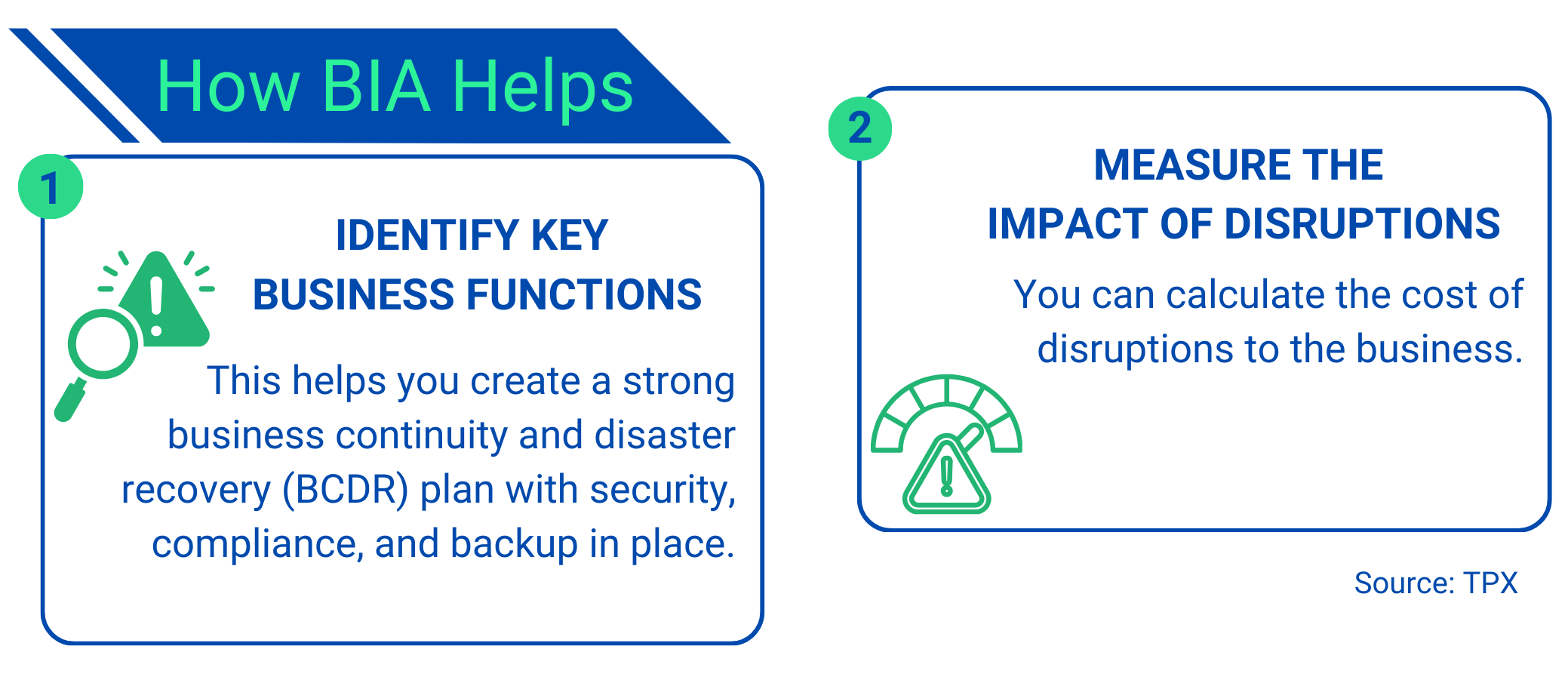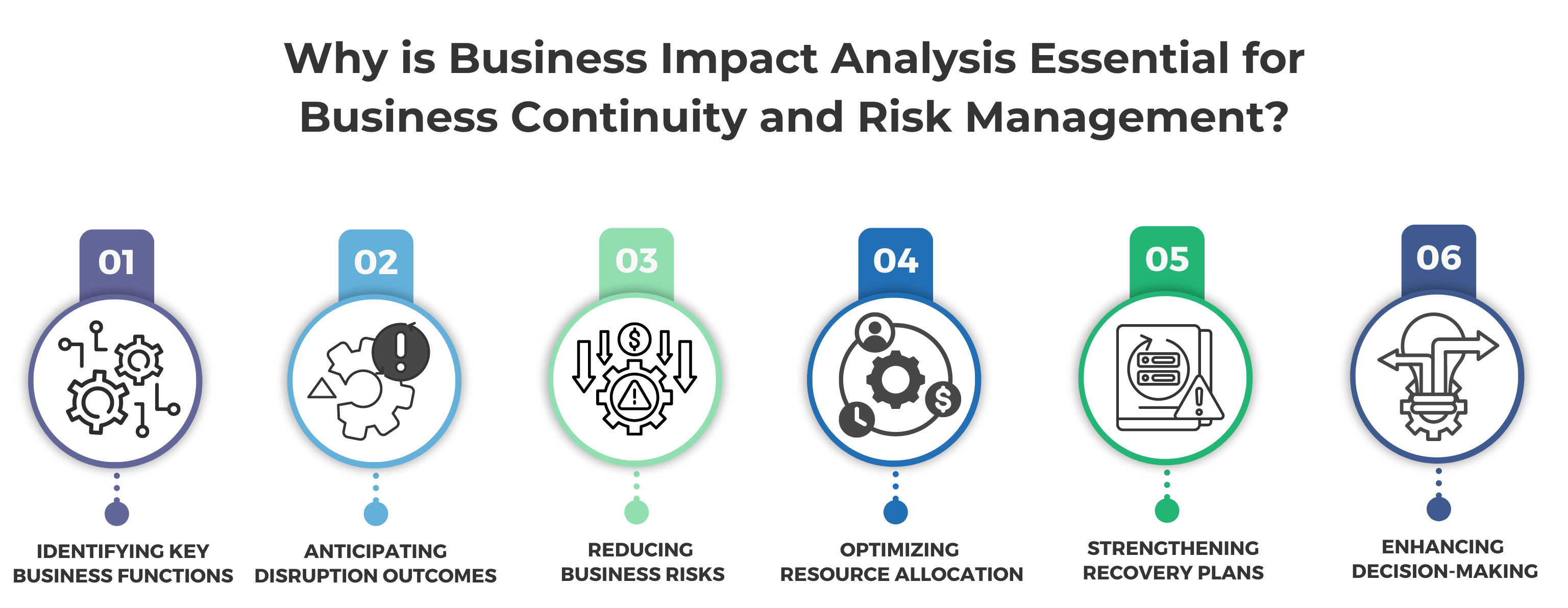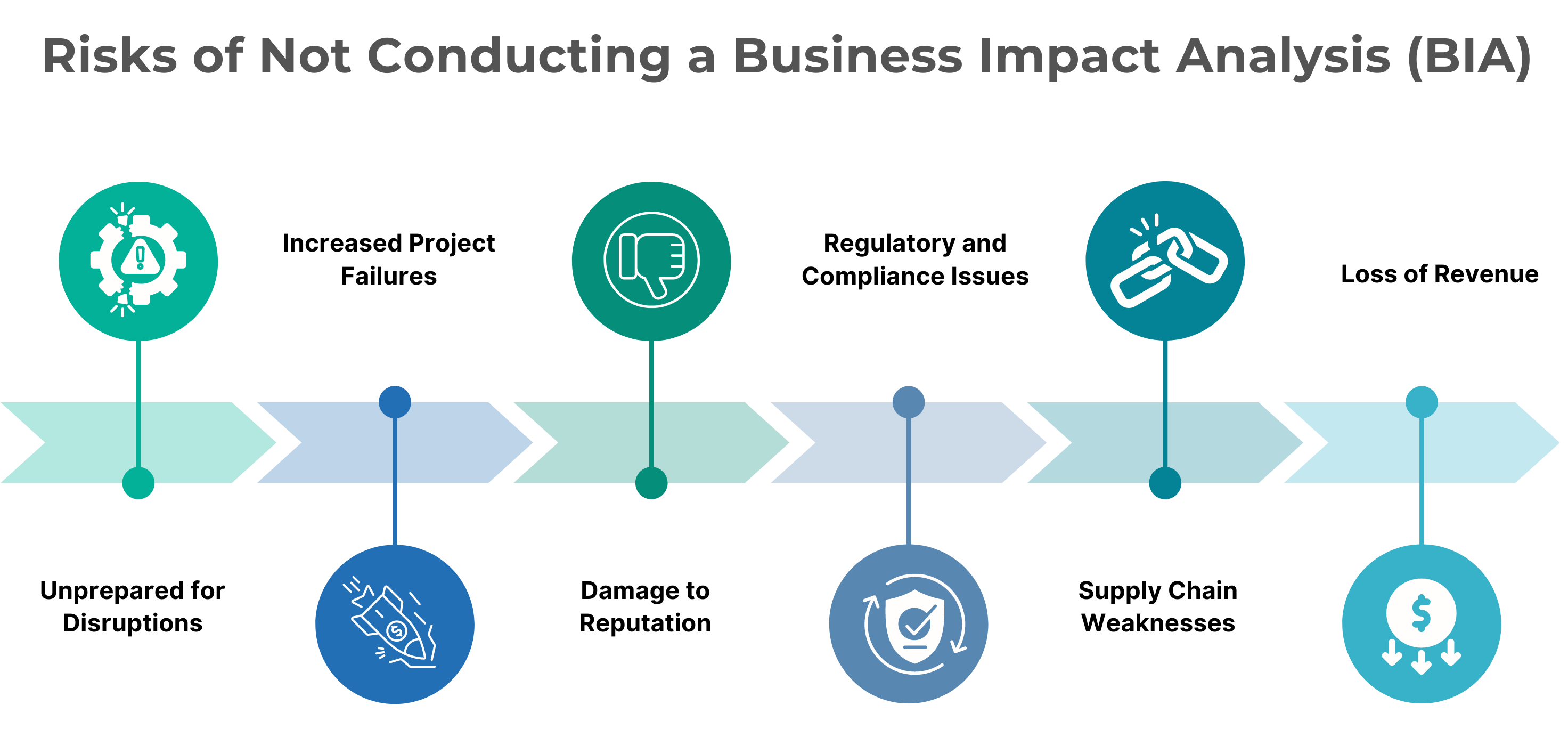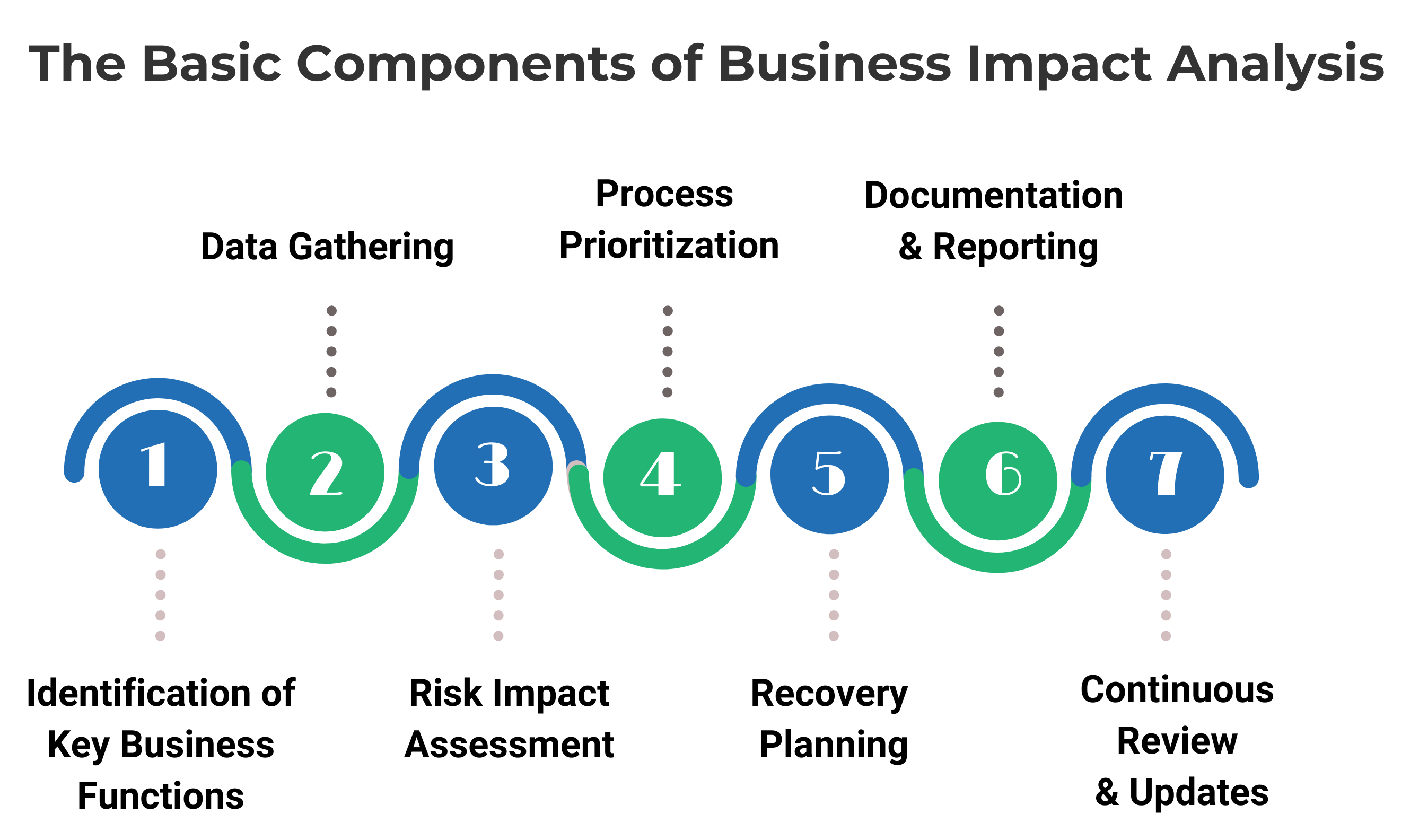
Murphy’s Law states, “Anything that can go wrong will go wrong.” For business and technology leaders, this isn’t just a clever saying but a stark reminder of the unpredictable nature of disruptions. Disruptions are inevitable, whether it’s a sudden system failure, a data breach, or an unexpected market shift. The real question isn’t how to avoid these challenges but how prepared your organization is to manage them when they arise. Enter Business Impact Analysis (BIA)—a strategic process designed to ensure that when disruptions happen, recovery is swift, resources are used effectively, and operational continuity is maintained.
This article explores how Business Impact Analysis is crucial for maintaining operational resilience, project success, and strategic decision-making. We also delve into how predictive intelligence enhances the BIA process by providing foresight into potential disruptions, ensuring that businesses can act before problems materialize. Together, BIA and predictive intelligence form a proactive, strategic foundation that high-level executives and project leaders can leverage to safeguard their operations.
What is Business Impact Analysis (BIA)?
At its core, Business Impact Analysis (BIA) is a systematic approach to identifying the potential impacts of disruptions on business operations. BIA helps companies determine which functions and processes are essential for survival and prioritize the resources required to recover them in a timely manner. For business and technology leaders, this is not merely a contingency plan; it’s a roadmap for navigating disruption with precision and agility.

A well-executed BIA ensures operational continuity, financial stability, and reputational safeguarding by answering critical questions like:
- Which processes are vital for business survival?
- What are the potential impacts of disruption on these processes?
- How can resources be allocated most efficiently to ensure recovery?
- What’s the recovery priority in a time of crisis?
Consider a technology company relying on its cloud infrastructure as a critical asset. A BIA would help identify this infrastructure as a top recovery priority in the event of an outage, allowing the business to focus on minimizing customer disruptions, maintaining service levels, and safeguarding data integrity. By pinpointing critical dependencies and evaluating the ripple effects of potential disruptions, BIA provides a structured approach to minimizing downtime and ensuring that business objectives stay on track, even in times of crisis.

Why Business Impact Analysis is a Strategic Imperative for Leaders
In today’s fast-paced business environment, disruption isn’t a possibility; it’s an eventuality. With businesses becoming increasingly reliant on technology, the potential threats have expanded, encompassing everything from cybersecurity breaches to supply chain failures and cloud outages. For this reason, Business Impact Analysis has evolved from a tactical exercise to a strategic imperative for modern business leaders.
- Informed Decision-Making - BIA provides a blueprint for making data-driven decisions during disruptions. Instead of reacting in a state of confusion, leaders can refer to a pre-defined, well-thought-out plan that prioritizes the most critical business functions. This ensures not only a faster recovery but also a more effective use of limited resources.
- Risk Mitigation - Through BIA, organizations can identify vulnerabilities in their operational processes and put safeguards in place. This proactive risk mitigation reduces the likelihood of significant disruptions, ensuring that crucial systems are restored quickly. For instance, if a manufacturing company knows that a particular supplier is critical to its production line, BIA would prompt contingency planning, such as having secondary suppliers ready.
- Cost Control - Disruptions are costly in terms of revenue loss, reputational damage, and operational delays. BIA helps leaders mitigate these costs by outlining the most efficient recovery strategies, ensuring that downtime is minimized and the business can continue operating without suffering long-term financial impacts.
For project managers, BIA goes beyond merely anticipating disruptions. It serves as a framework for maintaining project momentum. A well-defined BIA allows project managers to anticipate how disruptions could affect deadlines, resources, and overall project outcomes, enabling them to pivot quickly and effectively without derailing key initiatives. This is crucial in high-stakes environments where delays can result in budget overruns and stakeholder dissatisfaction. By leveraging predictive insights that provide early warning signs, project managers can foresee potential issues weeks in advance, ensuring the project stays on track and proactively mitigating risks before they escalate.

How BIA Ties into Project Management
For any business involved in complex, large-scale projects—whether in technology, manufacturing, or healthcare—Business impact analysis is indispensable for managing operational continuity. Disruptions in these environments don’t just affect individual processes; they can reverberate across multiple teams, departments, and systems. This is where BIA steps in as a guiding tool to ensure that when disruptions occur, the right priorities are set and key project phases are protected.
- Task Prioritization - Knowing which project activities have the most significant impact on business operations is crucial in a disruption. BIA provides this clarity by identifying and aligning essential tasks with overall business priorities. This ensures that project goals remain on track even when resources are limited.
- Resource Allocation - A major challenge in project management is the effective allocation of resources—especially when faced with disruptions. BIA helps project managers allocate human, financial, and technological resources to where they are most needed, ensuring that critical milestones are achieved and risks are minimized.
- Recovery Timeline Integration - Project managers are often asked to provide transparency around project timelines, especially during disruptions. BIA helps define recovery timelines for critical processes, giving project managers a realistic framework for communicating expectations to stakeholders and ensuring accountability.
For example, a BIA might reveal that the testing platform and customer-facing applications are the most critical assets in a software development project. Knowing this, a project manager can prioritize these systems during recovery efforts, avoiding bottlenecks in key project phases like product release. This keeps projects on track and maintains stakeholder confidence by demonstrating preparedness.

BIA - A Continuity Tool for Complex Project Environments
Complex projects, especially those that span multiple departments, geographies, or technologies, demand a structured approach to continuity management. Even small disruptions can have a domino effect in these environments, causing delays, escalating costs, and jeopardizing overall project success. BIA offers the structured approach necessary to ensure that disruptions are managed efficiently and project objectives are met.
Consider a manufacturing firm working on a product launch. The company identifies a critical dependency on a supplier for key components through BIA. The company proactively builds relationships with alternative suppliers by analyzing the potential impact of a delay in receiving these components. This proactive strategy ensures that the project timeline remains intact, even in the face of supplier issues.
By integrating BIA into project management, businesses can protect their most critical assets, avoid unnecessary delays, and ensure that key objectives are achieved—even when disruptions occur.
How Predictive Intelligence Enhances the BIA Process
While Business Impact Analysis provides a framework for responding to disruptions, predictive intelligence takes it a step further by allowing businesses to anticipate potential risks before they occur. This article explores how predictive intelligence augments BIA, enhancing the overall resilience of an organization.
Scenario Planning for Projects
Predictive intelligence enables scenario planning, allowing businesses to simulate potential disruptions and adjust their plans proactively. For instance, if predictive analytics identifies a likely delay in the supply chain, project managers can adjust their schedules to minimize the impact on project delivery. By anticipating risks, businesses can shift from reactive to proactive risk management, ensuring smoother project execution.
Real-Time Data for Decision Making
Integrating real-time data into BIA allows businesses to make swift adjustments when potential disruptions are detected. Predictive tools offer early warnings, enabling project managers to implement BIA recovery plans earlier, reducing downtime, and minimizing the impact on project deadlines. However, viewing predictive intelligence as an enhancement—not a replacement—of BIA is essential. While predictive tools can provide valuable foresight, they must be used with a robust BIA framework to ensure resilience.
Case Study - BIA and Predictive Intelligence in Project Management
To illustrate how BIA and predictive intelligence work together, consider the example of a software development company launching a new product. The company's BIA identifies critical assets essential to the launch, including customer data, product testing platforms, and communication channels. Predictive intelligence highlights potential warning signs months or weeks in advance during development.
By leveraging this information, the project team reallocates resources to address these vulnerabilities, ensuring that the project stays on track and avoids costly delays post-launch. This combination of BIA and predictive intelligence enabled the company to anticipate risks and adjust its strategies, resulting in a smooth and successful product launch.
Building Long-Term Resilience with BIA
Business Impact Analysis is not a static, one-time exercise. As businesses evolve and their operational priorities shift, so must their BIA strategies. Leaders should treat BIA as a living document that is regularly updated to reflect changes in technology, processes, and external threats.
For example, with the rise of cloud computing, businesses must now account for cloud outages and data center vulnerabilities within their BIA. Similarly, with the increase in remote work, companies must evaluate how disruptions to home office infrastructure could affect business operations. By keeping BIA current, businesses can remain agile and prepared for new challenges.
Conclusion
Business Impact Analysis (BIA) ensures operational continuity and project success. By identifying key processes, evaluating risks, and prioritizing recovery strategies, BIA enables organizations to mitigate disruptions effectively. When paired with predictive intelligence, BIA gains even more power, allowing businesses to act before disruptions occur.
Predictive intelligence enhances BIA by enabling real-time risk forecasting and data-driven decision-making. With predictive insights, companies can anticipate threats and allocate resources before disruptions escalate, significantly improving response speed and efficiency.
TrueProject offers an advanced solution that seamlessly integrates predictive intelligence with Business Impact Analysis (BIA) for businesses focused on strengthening their resilience. As a KPI-driven, predictive intelligence SaaS solution, TrueProject delivers accurate, comprehensive, and actionable insights, enabling businesses to take timely action and mitigate risks with minimal to no impact.
Its powerful analytics engine provides early warnings of potential issues, helping teams avoid disruptions before they affect project timelines. By leveraging predictive intelligence, TrueProject ensures businesses identify critical risks and execute recovery strategies efficiently. TrueProject stands out as a leading solution, intuitively and streamlinedly combining BIA and predictive intelligence.
Explore how TrueProject can elevate your BIA and ensure your projects stay on track, even during disruptions. For more information on TrueProject, visit trueprojectinsight.com.

About the Author:
Nisha Antony is an accomplished senior marketing communications specialist at TrueProject and a leader in predictive intelligence. With over 16 years of experience, she has worked as a Senior Analyst at Xchanging, a UK consulting firm, and as an Internal Communications Manager on a major cloud project at TE Connectivity.
She is an insightful storyteller who creates engaging content on AI, machine learning, analytics, governance, project management, cloud platforms, workforce optimization, and leadership.
Endnotes:
- Simplilearn Team. “The Ultimate Guide to Business Impact Analysis for 2024.” Simplilearn: Aug 13, 2024. https://www.simplilearn.com/what-is-business-impact-analysis-article
- Scrut Team. “Business Impact Analysis: What it is and how to do it.” Scrut: Jul 30, 2024. https://www.scrut.io/post/business-impact-analysis-what-it-is-and-how-to-do-it
- TPX Team. “The Seven Steps to Conducting a Business Impact Analysis (BIA)” TPX: (n.d.). https://www.tpx.com/wp-content/uploads/2023/08/Backup-Whitepaper-Business-Impact-Analysis-BIA.pdf





